
Pine Cone Syrup: A Simple Beginner’s Guide to Its Benefits, Recipe, and Everyday Uses

There’s something magical about walking through a pine forest - the crisp air, the soothing scent, and the earthy calm that feels like therapy for the soul. But did you know that these humble trees also hold a sweet secret?
Meet pine cone syrup, a traditional forest remedy that’s making a quiet comeback among herbal enthusiasts, health lovers, and home cooks alike. It’s aromatic, rich, and packed with surprising benefits - and yes, you can make it right in your kitchen.
Let’s dive into everything you need to know about this beautiful natural syrup: from what it is, to its health perks, how to make it, and the many creative ways to use it.
🌿 1. What Is Pine Cone Syrup?
Pine cone syrup is a natural sweet syrup made by infusing young, tender pine cones with sugar or honey over time. The process draws out the cones’ natural resin, vitamins, and aromatic oils, transforming them into a deep amber liquid with a unique forest flavor — sweet, slightly tangy, and beautifully piney.
It’s been used for centuries in Eastern Europe, Russia, and parts of Asia, where people believed it could boost immunity, soothe coughs, and protect the body from seasonal illnesses. In recent years, it’s found its way into the modern wellness world as a superfood syrup — part medicine, part delicacy.
🌲 2. The Secret Ingredient: Young Pine Cones
Not all pine cones are created equal! For syrup-making, you’ll need young, green pine cones - soft enough to cut in half with a knife. These are typically harvested in late spring to early summer (May to June) when they’re still small, sticky, and rich in essential oils.
How to pick the right ones:
-
Choose cones that are green to light brown, around 1–2 inches long.
-
Avoid dry, woody, or open cones - they’re too old.
-
Harvest from non-polluted areas, away from roads and factories.
Fun fact: Each pine species gives its syrup a slightly different aroma - some taste more citrusy, others more resinous or caramel-like.
💪 3. Health Benefits of Pine Cone Syrup
While it tastes like a forest dream, pine cone syrup is more than just delicious - it’s packed with natural compounds that have been linked to immunity, respiratory, and antioxidant support.
Here’s what makes it special:
🌬️ 1. Supports Respiratory Health
Traditionally, pine cone syrup was used as a natural cough and cold remedy. Its compounds — especially terpenes and resins — help soothe sore throats, open airways, and ease congestion. It’s like a herbal vapor rub you can eat.
💚 2. Boosts Immunity
Rich in vitamin C, polyphenols, and antioxidants, the syrup supports your immune system and helps your body fight free radicals that cause inflammation and fatigue.
⚡ 3. Natural Energy & Mood Lift
Pine’s essential oils are known for their refreshing and stimulating effects. A spoonful of pine syrup can help fight off tiredness and give a subtle energy boost - no caffeine needed.
💅 4. Anti-Inflammatory & Antioxidant Properties
Research shows that pine extracts have strong anti-inflammatory effects, which may help reduce oxidative stress and support overall wellness - from skin health to digestion.
❤️ 5. Gentle Detox Support
The natural resin compounds may also help stimulate circulation and support detoxification, helping your body flush out waste more efficiently.
🍯 4. How to Make Pine Cone Syrup (Step-by-Step Guide)
This recipe is beginner-friendly and doesn’t require any fancy tools - just patience and a love for nature. You can make it two ways: the cold method (traditional) or the hot method (faster).
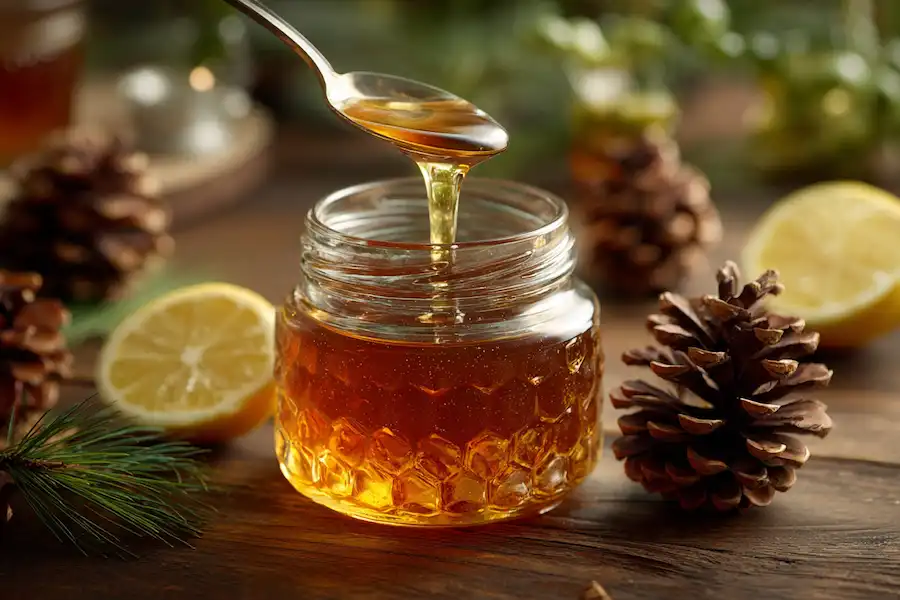
🧺 You’ll Need:
-
2 cups young green pine cones
-
2 cups granulated sugar (or raw honey for a softer, floral flavor)
-
1 clean glass jar with lid
-
Optional: 1 tbsp lemon juice or a few juniper berries for extra aroma
🌤️ Cold Method (Traditional Infusion)
1. Clean the cones: Gently rinse and pat dry the pine cones. Don’t soak them - you don’t want to wash off the resin.
2. Layer the ingredients: In your jar, layer pine cones and sugar (like layering fruit jam) until filled.
3. Seal & store: Close tightly and place the jar in a warm, sunny spot - a windowsill works great.
4. Wait: Let it sit for 3–4 weeks, shaking the jar every few days to help the sugar dissolve and extract the syrup.
5. Strain: Once the mixture turns dark amber and syrupy, strain it through a fine mesh or cheesecloth.
6. Bottle & store: Pour into a sterilized glass bottle or jar. Keep refrigerated - it can last up to a year.
Result: A golden, fragrant syrup with a deep forest sweetness and resin aroma.
🔥 Hot Method (Quick Version)
If you’re impatient (we get it), this method gives results in a few hours.
1. Combine pine cones and sugar in a pot (1:1 ratio).
2. Add ½ cup of water and bring to a gentle simmer.
3. Cook on low heat for 45–60 minutes, stirring occasionally.
4. Let cool, then strain and store in a clean jar.
💡 The hot version is faster but slightly less aromatic - the heat can reduce some of the delicate pine notes.
🍵 5. Everyday Uses for Pine Cone Syrup
Now that you’ve got your jar of liquid forest gold, let’s talk about all the ways to enjoy it 👇
☕ 1. As a Natural Sweetener
Drizzle into tea, coffee, or warm water with lemon for a fragrant, immunity-boosting drink.
🥞 2. Breakfast Topping
Use it like maple syrup on pancakes, waffles, yogurt, or oatmeal - the flavor is out of this world.
🍞 3. On Toast or Cheese
Spread over cream cheese, brie, or ricotta toast for a fancy snack that tastes like something from a rustic café.
🍹 4. In Drinks & Cocktails
Add a spoonful to sparkling water, whiskey, or gin cocktails for a pine-infused twist.
(Try a “Forest Spritz”: pine syrup + lemon juice + tonic water + ice.)
🧁 5. Baking & Desserts
Mix it into glazes, marinades, or even cakes - it pairs beautifully with vanilla, nuts, and citrus.
💊6. As a Cough Remedy
Take 1 teaspoon daily or stir into warm tea to ease seasonal coughs and sore throats naturally.
6. Safety Tips & Things to Know
Even natural remedies need care! Here’s what to keep in mind:
-
Always use young, soft cones - older cones can be too resinous and bitter.
-
Don’t overconsume: 1–2 teaspoons a day is enough.
-
Avoid if pregnant, breastfeeding, or allergic to pine pollen.
-
Make sure your pine cones come from clean, pesticide-free areas.
7. The Taste Experience
If you’ve never tried pine syrup before, imagine honey meeting caramel and forest air - that’s the vibe.
It’s sweet but earthy, with hints of citrus, spice, and something soothingly wild. Every batch tastes slightly different depending on your pine species and sugar choice, making it a beautiful seasonal creation that captures the flavor of the forest.
8. Final Thoughts
Pine cone syrup is a perfect example of how nature hides wellness in plain sight.
What once seemed like a simple pine cone turns out to be a source of sweetness, comfort, and natural healing.
Whether you use it as a soothing remedy for cold days, a creative kitchen ingredient, or just a unique gift from the forest - this syrup connects you to nature in a simple, grounding way.
So next time you find yourself in a pine forest, look closer. The world’s most underrated natural treasure might just be lying at your feet.
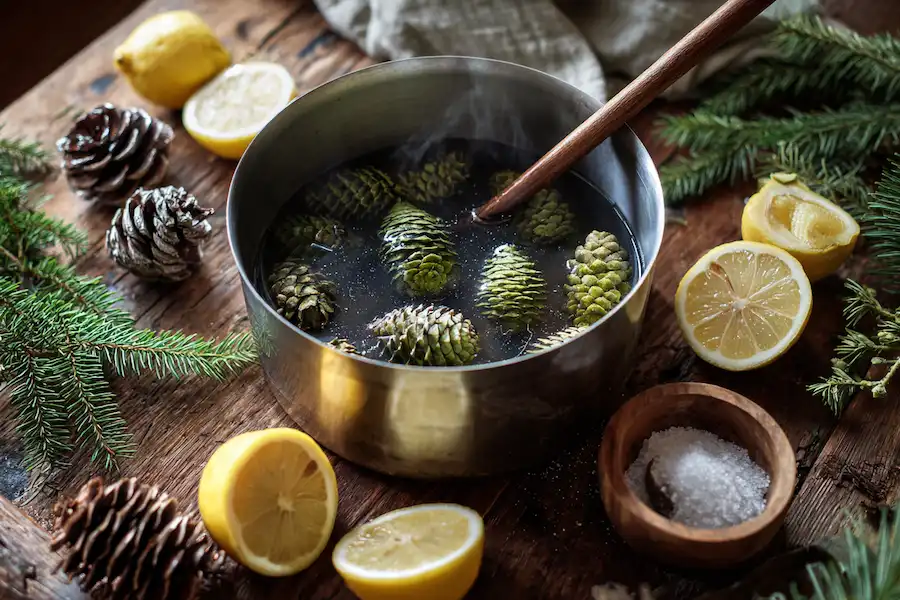
News in the same category


The Hidden Dan.ger in Your Lipstick: What You Need to Know About Cadmium Contamination

She Ignored These 5 Symptoms — Now She’s Battling Stage 4 Colon Can.cer
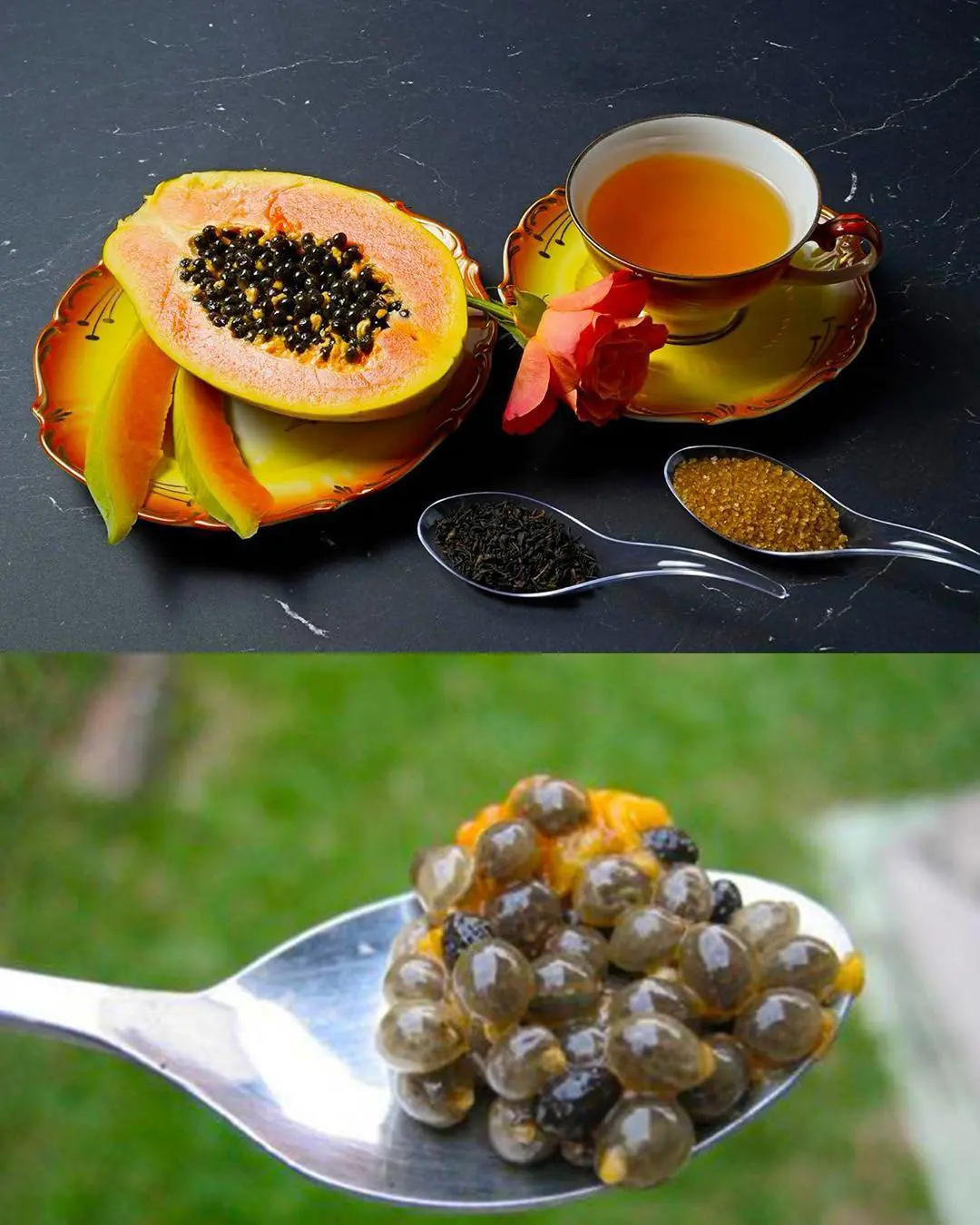
Don’t Throw Them Away - The Incredible Health Perks of Papaya Seeds You Need to Know

5 Signs of Appendicitis You Should Not Ignore

What You Need to Know About Vitamins and Supplements for Heart Health

Nothing ki:lls faster than your own mind. Don’t stress about things that are not under your control

5 Common Causes That Can Increase Your Risk of Liv.er Disease

4 Early Warning Signs of a Stroke That Occur 15 Minutes Before It Happens

Dentist-Approved: The Right Way to Eat Fruit to Prevent Cavities
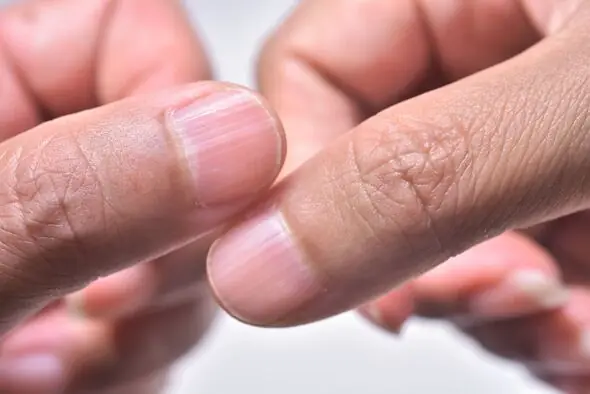
Observe Your Nails to Detect Health Issues

5 Morning Habits That Silently Dam.age Your Kid.neys
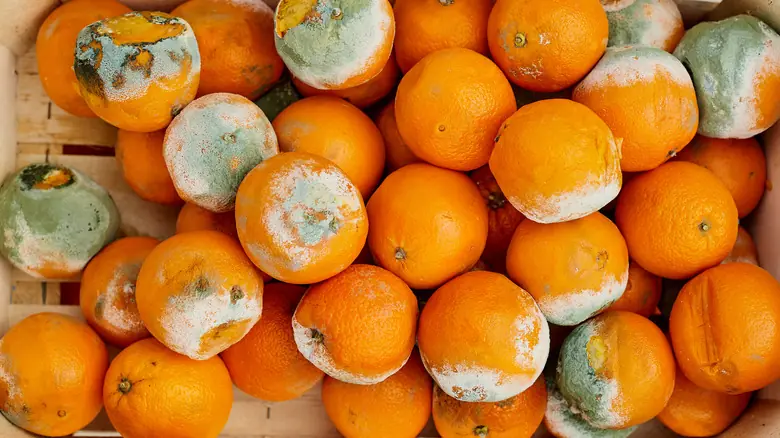
U.S. Professor Reveals 3 Types of Foods That Contain Dangerous Tox.ins and May Cause Can.cer

6 groups of people shouldn't drink coconut water

Do Not Ignore These 10 Warning Signs That Your Kidneys May Be In Danger
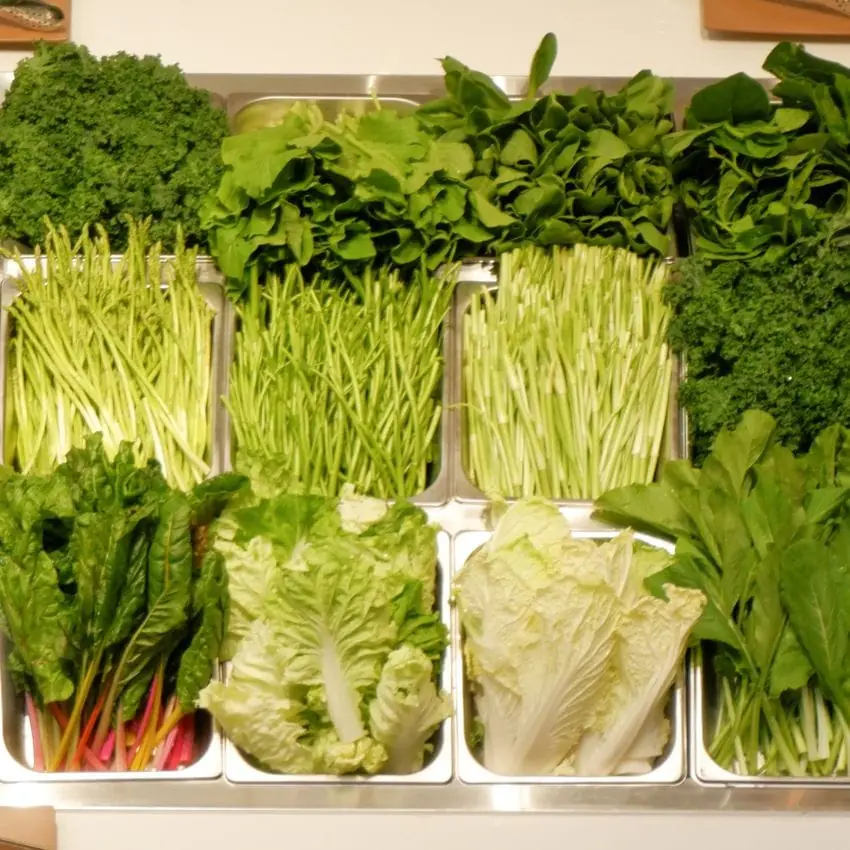
6 Vegetables That Help Regulate Bloo.d Lipids Naturally

What Happens When You Eat Too Much Red Meat?

Cancer is painless at first, but if you see 8 signs when going to the toilet

Symptoms of end stage kidney can,cer
News Post

Pokeweed (Phytolacca americana): The Beautiful but Dan.gerous Plant You Should Avoid

The Hidden Dan.ger in Your Lipstick: What You Need to Know About Cadmium Contamination

She Ignored These 5 Symptoms — Now She’s Battling Stage 4 Colon Can.cer

Here’s What Really Happens When You Sleep with Socks On

Don’t Throw Them Away - The Incredible Health Perks of Papaya Seeds You Need to Know

The Heroic WWI Homing Pigeons That Saved Countless Lives
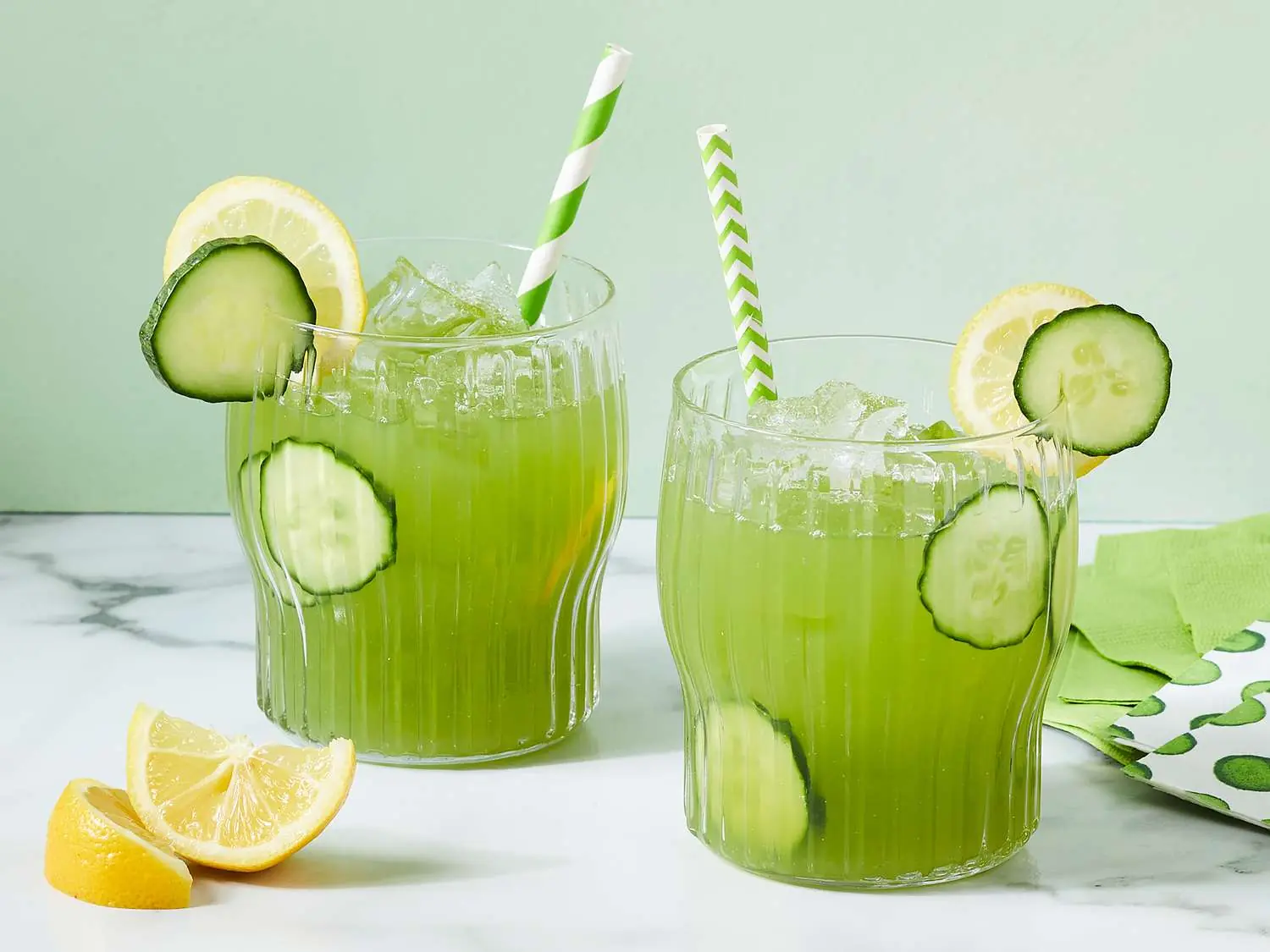
This Cucumber Lemonade Will Change the Way You Think About Summer Drinks

Our Rescue Dog Found an Unconscious Older Lady in the Woods – What We Learned About Her Changed Everything

5 Signs of Appendicitis You Should Not Ignore

What You Need to Know About Vitamins and Supplements for Heart Health

11 Grilled Corn Secrets Your Taste Buds — and Your Doctor — Don’t Want You to Ignore

Nothing ki:lls faster than your own mind. Don’t stress about things that are not under your control

5 Common Causes That Can Increase Your Risk of Liv.er Disease

4 Early Warning Signs of a Stroke That Occur 15 Minutes Before It Happens

Dentist-Approved: The Right Way to Eat Fruit to Prevent Cavities

3 Dinner Swaps That Keep You Full and Speed Up Fat Loss

Observe Your Nails to Detect Health Issues

5 Morning Habits That Silently Dam.age Your Kid.neys
